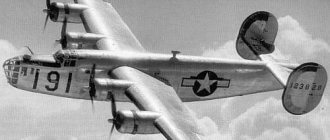High performance network
In all its forms, Thunderbolt supports Ethernet network protocols. This means you can use a Thunderbolt adapter cable to connect to a 10Gbps Ethernet network. But that's not all. You can also simply use a Thunderbolt cable to connect two computers together at speeds of up to 10 Gbps to a local network of the same rank.
Using the peer-to-peer networking option is a great way to quickly copy a large amount of data between two computers, for example when moving to a new device. How to connect Thunderbolt and make a network? To do this, just insert the cable into the connector and use system utilities and the settings wizard to make the connection. The operation takes no more than 5 minutes.
It is noteworthy that you can synchronize computers based on Mac OS and Windows operating systems. In this case, the settings for each OS will be the same. For convenience, the latest versions of the system have a wizard for searching and installing new equipment, which will help you quickly synchronize your PC.
Connecting one or more displays
Thunderbolt 3 supports connecting multiple displays to a computer by sending video over a cable using DisplayPort 1.2 video standards. This allows you to connect any monitor that uses these standards or one of the compatible connection types, such as mini DisplayPort.
Thunderbolt 3 supports connecting two 4K displays at 60fps, one 4K display at 120fps.
To use a single Thunderbolt connection to connect multiple displays, you'll need a monitor that supports a connector that can be attached to it (it will have a pair of labeled ports) or a docking station. If you have a question about Thunderbolt technology, what kind of docking station it is, you can contact any Apple hardware store. This is where you can find equipment and peripherals of this marking.
Evolution of the connector
The move to USB-C allowed the Thunderbolt 3 to make a quick transition from Apple devices to other PCs and laptops. The only downside was the compatibility issue - the new USB connection was not compatible with first and second generation Thunderbolt without an expensive adapter.
Here are some properties of USB-C Thunderbolt 3:
- Data transfer at 40 Gbps.
- Stream video to two 4K monitors at 60Hz.
- Charges smartphones and most laptops with up to 100W power.
- Connect to an external GPU (unless it is blocked by the manufacturer).
To confirm that the USB-C port is indeed Thunderbolt 3, there is a small cable symbol on the connector body that often distinguishes it from a standard USB-C port. What is a Thunderbolt system and why is it required in this case? The latest generation of interconnected devices and technologies are combined into a single system for the ability to connect a large number of devices, models and peripherals.
Pros of Thunderbolt 3rd generation
The latest generation of cables also raises a question among Thunderbolt users: what kind of device is it and what capabilities does it have? However, one of the most important changes was 4K resolution compatibility. Users who had Thunderbolt were pleased to know that the highest resolutions would be supported if necessary. Also, devices with Thunderbolt 2 were compatible with original Thunderbolt-compatible devices, regardless of generation. Thunderbolt technology remained exclusive to Apple computers until the transition to USB-C with Thunderbolt 3.
The Thunderbolt 3 connector can be used to connect to a computer and various types of peripheral devices. As the name suggests, Thunderbolt is fast, but more importantly, the port is versatile and uses the common USB-C connector to connect to most devices and gadgets.
Among all the types of peripheral devices supported by Thunderbolt, it is worth highlighting 6 especially necessary ones, which will be described below.
Features of application
Apple's first release of Thunderbolt was only available for Macs for the first few years. Intel wanted to use the technology to connect ordinary PCs, but ultimately decided to completely transfer control of the use of the product to Apple. In addition to the limited availability of connector devices, another disadvantage of this new technology was the cables, which were expensive. Therefore, at that time, the question rightly arose about Thunderbolt: what kind of cable is it and are there cheaper analogues?
However, there were no analogues of the connector at that time. The problem was precisely the cost of the technology and its implementation in ports and cables. Thunderbolt received special attention during the period when professional designers and developers began to be interested in it. It was they who were able to highlight such distinctive properties of the cable from regular USB, such as the speed and reliability of data transmission and processing.
USB 3.1 external storage
Thunderbolt 3 supports multiple connection protocols. The technology also includes support for USB 3.1 Gen 2, as well as earlier versions of USB.
USB 3.1 Gen 2 provides connection speeds of up to 10 Gbps, which is as fast as the original Thunderbolt specification and suitable for most general purpose applications. The function will be useful for those who often use various multimedia services.
A Thunderbolt to USB adapter uses only the standard USB-C cable that is sometimes included with USB peripherals. This, and the overall cost of USB 3.1 peripherals, makes Thunderbolt 3 ports very useful.
USB 3.1 Gen 2 at 10 Gbps makes storage systems using this technology attractive because they have the bandwidth to fully utilize SSDs using SATA III connections. This connection type is also a good choice for dual-core RAID systems, standard disk drives, or solid-state drives.
Technology development
This new product was released as Thunderbolt in the early 2010s. At first, the connector was only available on Apple devices. The development was aimed at a more reliable and high-speed source of data transfer between devices. Thunderbolt reviews showed how popular this technology has become among many users.
This was especially promising for designers or engineers who used laptops but still needed powerful connections to external storage, high-resolution displays, and similar accessories. However, the technology continued to develop further and improved versions were soon released.
Each new generation of devices had its own features and characteristics. When improving the version, the developers mainly focused on the types of connected devices and peripherals. The latest versions of the connector and cable have made it possible to use not only external modules, but also internal ones, such as a video card and solid-state drives.
RAID 3 drives
Thunderbolt 3 provides data transfer speeds of up to 40 Gbps, making it a very attractive technology for use in high-performance storage systems.
Thunderbolt-based storage systems are available in many formats, including single memory bus devices that can be used to boot a computer. This alternative is much more productive than systems with drives built using server technology.
Tiered enclosures using SSDs and various RAID configurations can improve disk performance and push the speed limits needed to create, edit and store multimedia projects.
The Thunderbolt 3 adapter allows you to use a large number of relatively inexpensive disk drives to create a large mirrored or, in other words, protected data storage. When computing processes require high-speed storage access, Thunderbolt 3 can provide it completely.
How the technology came about
Thunderbolt technology originated in the early 2000s with an Intel project called Light Peak, which was intended to add optical data transmission to the traditional electrical transmission used with computer peripherals (essentially using wire and fiber optics).
The developers soon discovered that their prototypes, with good copper wiring, already achieved the results that the company had previously wanted, which was the beginning of the development of a new device.
General characteristics of the P-47D-28
- Country : USA
- Vehicle type Fighter
- Rank 3
- Battle rating in arcade mode 3.3
- realistic mode 4.7
- simulator mode 4.3
More options
Advanced options
Arcade mode
- Price 100,000€
- Reward 70%
- Research bonus 142%
- Max. speed 714 km/h
- Time to turn 23.0 s
- Crew training price: 29,000€
- Climbing 14.1 m/s
- Run length 700 m
- 10 free repairs
- Second salvo weight 4.44 kg/s
- Max. altitude 12500 m
- at an altitude of 7071 m
- 11 weapon sets
- Repair price 1,610€
- Gun 12.7 mm M2 Browning machine gun - 8 pcs. (Ammo: 3400) Cooldown 20s
- Free repair time 13h. 18m.
Realistic mode
- Price 100,000€
- Reward 260%
- Research bonus 142%
- Max. speed 714 km/h
- Time to turn 23.0 s
- Crew training price: 29,000€
- Climbing 14.1 m/s
- Run length 700 m
- 10 free repairs
- Second salvo weight 4.44 kg/s
- Max. altitude 12500 m
- at an altitude of 7071 m
- 11 weapon sets
- Repair price 3,915€
- Gun 12.7 mm M2 Browning machine gun - 8 pcs. (Ammo: 3400) Cooldown 20s
- Free repair time is 21h. 39m.
Simulator mode
- Price 100,000€
- Reward 300%
- Research bonus 142%
- Max. speed 714 km/h
- Time to turn 23.0 s
- Crew training price: 29,000€
- Climbing 14.1 m/s
- Run length 700 m
- 10 free repairs
- Second salvo weight 4.44 kg/s
- Max. altitude 12500 m
- at an altitude of 7071 m
- 11 weapon sets
- Repair price 4,624€
- Gun 12.7 mm M2 Browning machine gun - 8 pcs. (Ammo: 3400) Cooldown 20s
- Free repair time 1 day. 03h.
Statistics on P-47D-28 for 1 month
These statistics are collected on players who visited our site and cannot be used to point out problems to developers, as they are not complete. Arcade mode
- Number of battles 4913
- Win rate 72.96%
- Air frags per battle 1.88
- Air frags per death 1.74
- Ground frags per battle 2.39
- Ground frags per death 2.2
Realistic mode
- Number of battles 2018
- Win rate 69.95%
- Air frags per battle 0.6
- Air frags per death 0.61
- Ground frags per battle 2.12
- Ground frags per death 2.15
Simulator mode
- Number of battles 91
- Win percentage N/A
- Air frags per battle N/A
- Air frags per death 4.83
- Ground frags per battle N/A
- Ground frags per death 1.1










